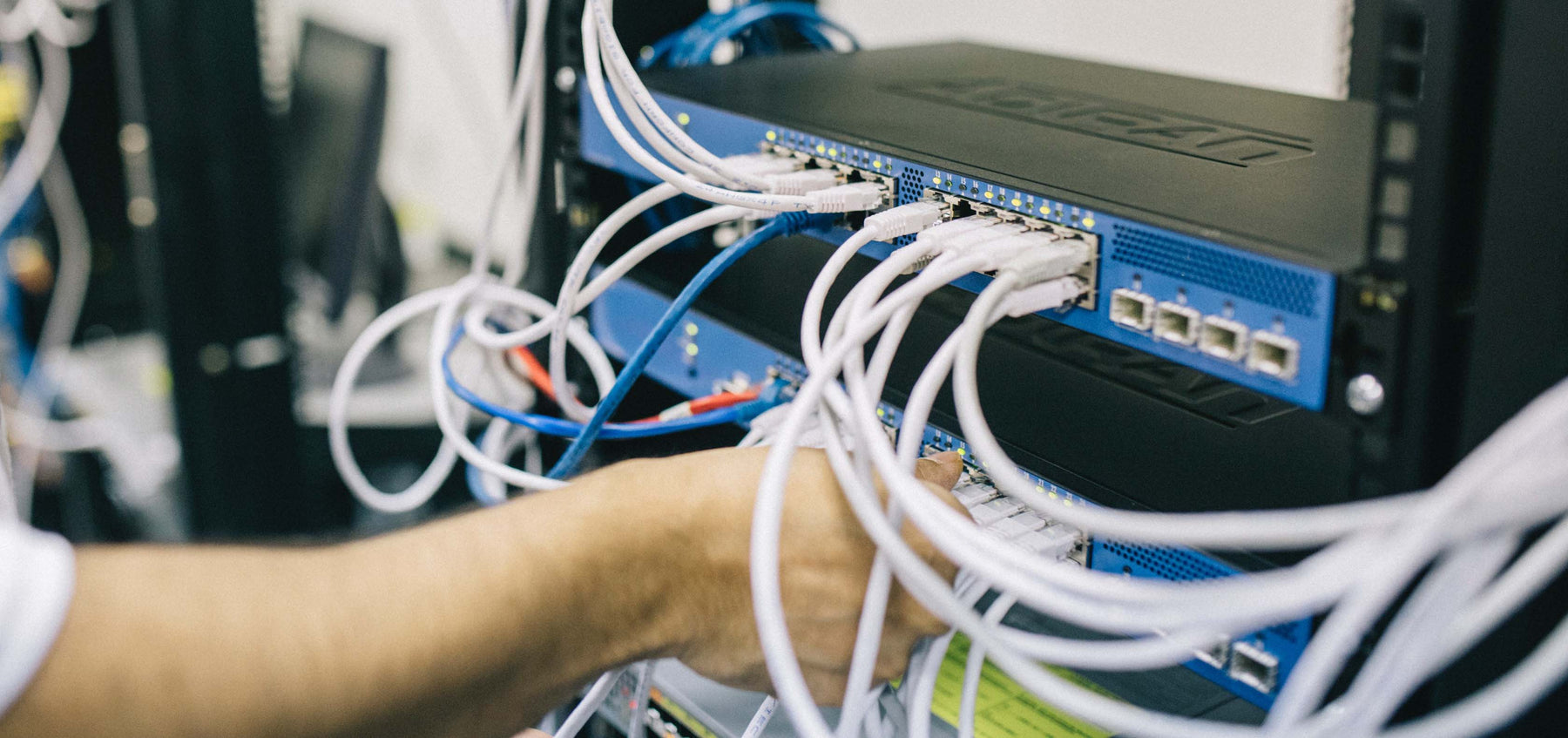
How to Determine the Right Length for Structured Cables
Ethernet Cables
I wish there was a magic number I could give you to know how much ethernet cable to buy when it comes to cables but because all buildings are not the same inside the cable paths in which patch cables go will never be the same.
The best way to determine the amount of ethernet cable you will need is to plan the route the cable will be traveling and measuring the length. Measuring the distance will not only save you money by not guessing and coming up short it will also make sure you do not overestimate and spending hundreds of dollars more than what is needed for the stationary patch cable.
In order to get accurate measurements, you should not only look at your blueprints or cabling plan but also walk the route of the cable run. When you physically walk the run you will be able to notate any obstacles that the cable must be planned around or anything else that may affect the length the cable must run.
Once you have walked the planned route the next thing to do is decide a way to accurately measure the distance from your cable reels or boxes to the server room or data center. Please include the distance from outside the closet to the patch panel or block within. You can count the ceiling or floor tiles, but the best technique is to actually run a long string from the boxes to the block or panel in the room. Make sure to add any extra looped cable that will be stored in the closet as well. You are basically using the string to follow the path you would like to lay the cable in including the path of any other wireway or other cable management devices you may use in the server room.
The string once you have run it, now acts as your length template so you can easily measure it and feel confident that you will order the necessary patch cable length needed to do the job. My suggestion for the loop at either end is to add 2ft to each end.
HDMI
Unlike other cables an HDMI cables audio and visual output is affected by length. Any HDMI cable over 20 feet in length will start distorting your viewing and listening experience. That being said the shorter the HDMI cable the better sound and picture you will get. That is why finding the perfect length cable is important.
Much like the ethernet cables you need to think about the devices you are hooking up and where they are in comparison to each other. So if you are hooking your new gaming console up to your flat screen in the living room are you going to want to put it on a shelf or on the floor or credenza? Or do you want it on the opposite wall of the TV? Or maybe you want to place the console on the adjacent wall from the TV? Whatever you choose will be fine you just have to look for obstructions your cable path may come across. You will also have to think of any cable management devices that you may want to use. As you know these obstacles can disturb the path from your player to your TV or monitor.
After you have decided where you want everything to go it is time to measure the distance. Keep in mind those obstacles and if you are going to have a cable management system running up your wall etc. because you will need to measure the distance your console sits to the wall and the wall to your TV. I also recommend adding a couple feet just in case you need to move your console around and don’t want the HDMI to get unplugged or break.
Speaker Wire
Just like the HDMI cable speaker wire will lose clarity in the sound the longer the wire run is. Unlike HDMI or ethernet cables the speaker wire comes in different gauges, which increases the length you are able to run depending on the size of the gauge. Speaker wire gauges are just like extension cord gauge, the lower the number the bigger the diameter, which in turn means the bigger the diameter the more copper inside the wire to conduct the electricity or in this case carry the music.
When you are trying to figure out the length of speaker wire you will need to power your speaker from your amplifier it is best to use the string method. Again, remember to walk the path with the string going over and around any impediments, if the speaker wire is for free standing speakers, please make sure you run the wire in a way that is safe and not a tripping hazard. After you finish running the string allow at least two to three feet of slack for outdoor free-standing speakers and one foot for mounted speakers just so when you take them off the mount or move them they do not pull out of the amp or speaker themselves.
Below is a chart to help determine the speaker wire you need and the lengths they are good for depending on the speaker output you buy.
|
Speaker Wire Gauge |
4 Ohms Speakers |
6 Ohms Speakers |
8 Ohms Speakers |
|
18 AWG Speaker Wire |
16 feet |
24 feet |
32 feet |
|
16 AWG Speaker Wire |
24 feet |
36 feet |
48 feet |
|
14 AWG Speaker Wire |
40 feet |
60 feet |
80 feet |
|
12 AWG Speaker Wire |
60 feet |
90 feet |
120 feet |

Leave a comment